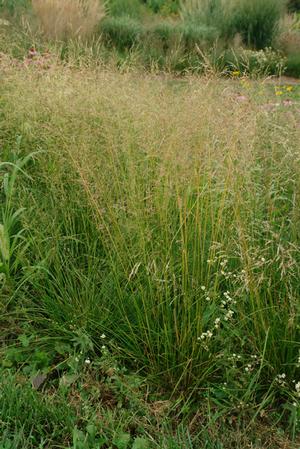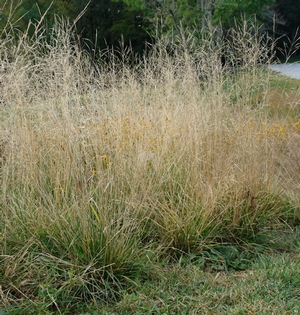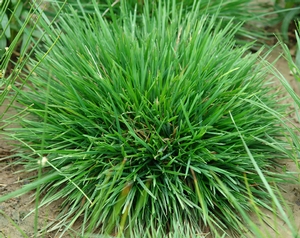Deschampsia cespitosa
Common: tufted hairgrassDeschampsia cespitosa LP50 - 50 per flat
- Height: 2'-4'
- Spread: 1'-2'
- Spacing: 12"
- Hardiness Zone(s): 4-9


Deschampsia cespitosa LP50 - 50 per flat


An ornamental grass that does well in moderately shady locations. Airy masses of finely branched, light green inflorescences rise above the neatly rounded tufts of narrow, dark green foliage in early summer, and remain intact long enough to provide some early winter interest.
Cut back seed stalks in late winter to early spring. To propagate, divide in spring or fall.
One of a few well-known ornamental grasses that do well in moderately shady locations, Deschampsia cespitosa is a clump forming, cool season grass. Noted for its airy masses of finely branched, light green infloresences rising above the neatly rounded tufts of narrow, dark green foliage in early summer, tufted hairgrass provides multi-season interest and remains intact long enough to provide early winter interest. A lovely, carefree plant, it can be used as filler in the garden, as a turfgrass replacement, and as erosion control near water edges.
Deschampsia cespitosa is a transcontinental plant, ranging across the northern hemisphere, and adapting to various conditions. Populations occupy moderately moist to seasonally flooded, sunny to partially shaded environments in a wide variety of soil types. Plant can be found in a variety of habitats including seasonally wet prairies, open forests, tidal marshes, and pond and stream margins. In the eastern United States, it can be found in disturbed soggy fields and roadsides. Different populations and subspecies tolerate high soil acidity and heavy metals while some have moderate tolerance to salinity. The plant prefers cooler climates and floral display may be diminished in hotter climates in the South. Plant should be cut back to the ground in late winter for spring and summer display.
We love using Deschampsia cespitosa as a transitional plant, bridging the gap between a full sun site to a shadier site in the garden in sweeps and masses. To take best advantage of its decorative inflorescences, be sure to site tufted hairgrass where it can be backlit by the setting sun and where gentle air movement can sway its cloudlike flower panicles. Tufted hairgrass is a larval food plant to several butterflies in North America, including umber skippers, and to over 40 Lepidopteran species worldwide. Seeds and leaf blades can be forage for small birds and mammals as well.